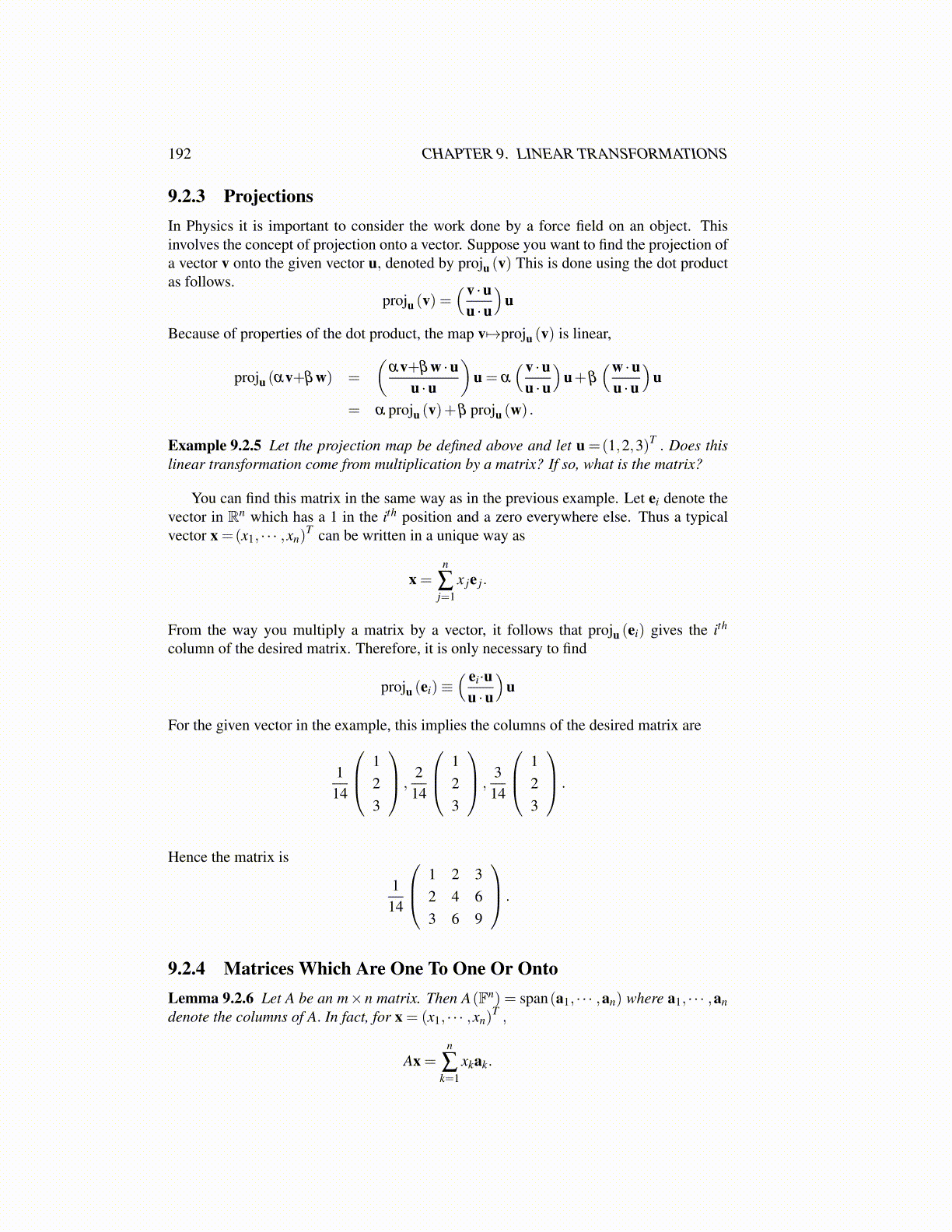
192 CHAPTER 9. LINEAR TRANSFORMATIONS
9.2.3 ProjectionsIn Physics it is important to consider the work done by a force field on an object. Thisinvolves the concept of projection onto a vector. Suppose you want to find the projection ofa vector v onto the given vector u, denoted by proju (v) This is done using the dot productas follows.
proju (v) =(v ·u
u ·u
)u
Because of properties of the dot product, the map v7→proju (v) is linear,
proju (αv+βw) =
(αv+βw ·u
u ·u
)u = α
(v ·uu ·u
)u+β
(w ·uu ·u
)u
= α proju (v)+β proju (w) .
Example 9.2.5 Let the projection map be defined above and let u =(1,2,3)T . Does thislinear transformation come from multiplication by a matrix? If so, what is the matrix?
You can find this matrix in the same way as in the previous example. Let ei denote thevector in Rn which has a 1 in the ith position and a zero everywhere else. Thus a typicalvector x =(x1, · · · ,xn)
T can be written in a unique way as
x =n
∑j=1
x je j.
From the way you multiply a matrix by a vector, it follows that proju (ei) gives the ith
column of the desired matrix. Therefore, it is only necessary to find
proju (ei)≡( ei·u
u ·u
)u
For the given vector in the example, this implies the columns of the desired matrix are
114
123
,214
123
,3
14
123
.
Hence the matrix is
114
1 2 32 4 63 6 9
.
9.2.4 Matrices Which Are One To One Or OntoLemma 9.2.6 Let A be an m×n matrix. Then A(Fn) = span(a1, · · · ,an) where a1, · · · ,andenote the columns of A. In fact, for x = (x1, · · · ,xn)
T ,
Ax =n
∑k=1
xkak.